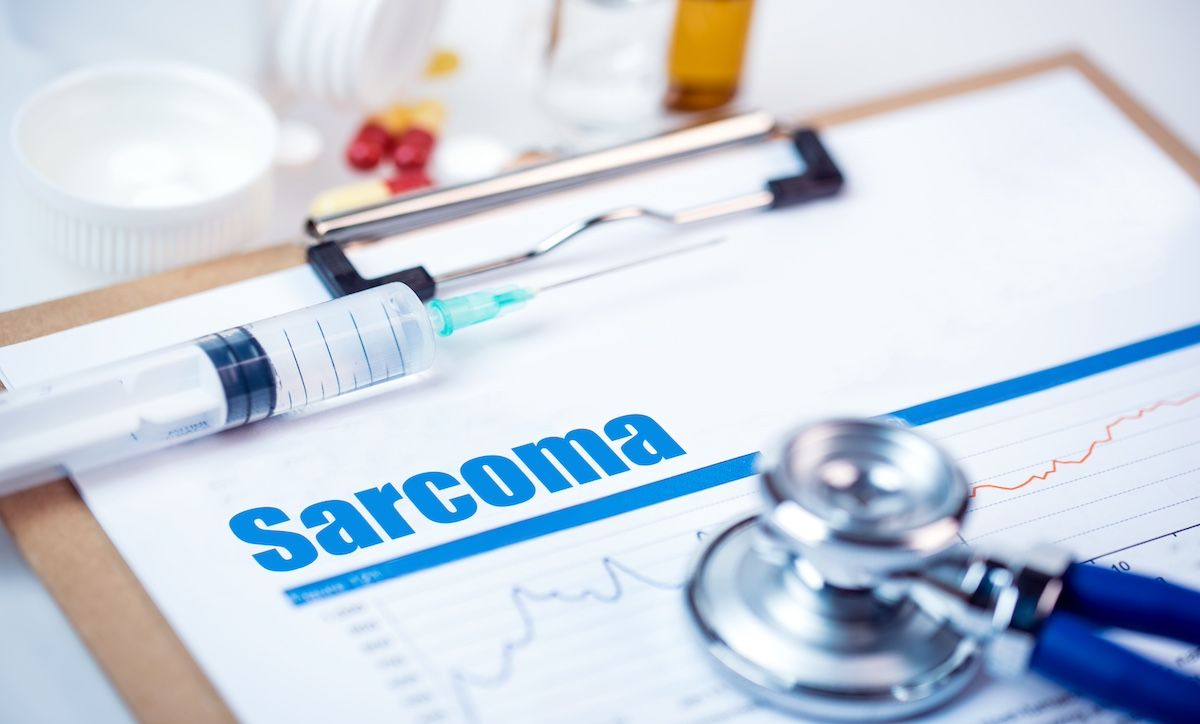- Center on Health Equity & Access
- Clinical
- Health Care Cost
- Health Care Delivery
- Insurance
- Policy
- Technology
- Value-Based Care
Rare Case of Soft Tissue Sarcoma Spreading to the Heart Highlights Diagnostic, Therapeutic Challenges
The case shows how such cardiac involvement can mimic neurologic disease and demand complex, multidisciplinary management.
Soft tissue sarcomas (STS) are rare malignant tumors arising from connective tissues such as muscle, fat, and blood vessels, accounting for only about 1% of adult cancers. While these cancers most often metastasize to the lungs, cardiac involvement is particularly uncommon, seen in less than 0.03% of cases.
The authors emphasize that clinicians should consider cardiac metastasis in patients with known sarcoma who develop unexplained cardiac or neurologic symptoms. | Image credit: cacaroot - stock.adobe.com

A new case report from Tehran published in Clinical Case Reports describes one of these rare events: a 74-year-old man whose synovial cell sarcoma metastasized to the left atrium (LA) and pulmonary veins, producing neurologic symptoms that initially suggested a stroke rather than cardiac disease.
Two years after treatment for synovial sarcoma, the patient developed sudden stroke-like symptoms that led to further cardiac evaluation. Imaging revealed a large metastatic tumor in the left atrium extending into the pulmonary veins, originating from a lung mass but without involvement of the heart muscle or valves. Due to the high risk of stroke, the patient underwent palliative open-heart surgery to remove the tumor from the left atrium and pulmonary vein, followed by chemotherapy and radiotherapy. He recovered well, and follow-up over a year showed no recurrence or new cardiac involvement.
The rarity of this case lies in both the pattern and location of metastasis, explained authors of the case report.
“Metastatic heart disease presents significant diagnostic challenges due to its variable and nonspecific clinical features, which are influenced by tumor location and burden,” wrote the group. “Its manifestations often resemble other cardiac pathologies, complicating accurate diagnosis and effective management.”
Depending on the location, patients may present with heart failure, arrhythmias, pericardial effusion, or embolic events. In this case, the initial manifestation mimicked transient ischemic attacks, illustrating how intracardiac tumors can masquerade as neurologic disease. Advanced imaging techniques, particularly transthoracic and transesophageal echocardiography, remain the cornerstone of diagnosis, with cardiac CT and MRI providing additional anatomical detail.
Treatment strategies depend on the tumor’s size, location, and extent of systemic disease. There are no standardized guidelines for cardiac metastases from STS. In select patients with isolated cardiac lesions and preserved ventricular function, surgical excision can relieve obstruction or reduce embolic risk, even if performed palliatively. Adjuvant chemotherapy and radiotherapy may delay recurrence, although long-term survival remains limited. Previous studies suggest that patients with cardiac metastases from STS typically survive less than one year after diagnosis, though surgical and combined therapies may extend survival modestly.
This case also highlights the importance of multidisciplinary coordination among oncologists, cardiologists, radiologists, and cardiac surgeons. Because cardiac metastases often occur in advanced disease, treatment is typically palliative and focused on symptom relief and quality of life. However, when resection is technically feasible, surgery can provide meaningful improvements in functional status and prevent catastrophic embolic events.
The authors emphasize that clinicians should consider cardiac metastasis in patients with known sarcoma who develop unexplained cardiac or neurologic symptoms. They recommend including cardiac imaging as part of routine metastatic evaluation for high-risk sarcoma patients, especially those with pulmonary or mediastinal lesions. Early detection may allow for targeted interventions that extend survival or prevent complications.
Several literature reviews cited in the report reinforce how unusual such cases are, with the researchers noting, “Only a few cases of metastatic heart involvement in sarcoma have been documented in the literature. The reported incidence ranges from 0.001% to 0.03%.”
A 1986 review of 120 autopsy cases found cardiac metastases in only 25% of patients with STS, primarily involving the myocardium or pericardium. Similarly, a 2010 Japanese study identified just 11 living patients with cardiac metastases among 641 STS cases, most diagnosed through echocardiography or CT rather than symptoms. Even among these, involvement of the left atrium and pulmonary veins was exceptionally rare, and surgical resection was seldom attempted.
Most recently, a 2025 review identified 442 cases between 2000 and 2021 from the SEER database, which showed that incidence was most common in White patients and slightly more common in females. Exploring outcomes, the researchers found that survival outcomes were more favorable in younger patients, those with earlier stages of disease, and among those who received surgery or chemotherapy.2
References
1. Bagheri A, Khani M, Fesharaki MJ, et al. An unusual presentation of metastatic soft tissue sarcoma to the left atrium and pulmonary veins: a case report and comprehensive literature review. Clin Case Rep. 2025:13(10):e70991. doi: 10.1002/ccr3.70991
2. Bajwa S, Ali H, Itoo U, et al. EPR25-119: primary cardiac soft tissue sarcoma: a retrospective analysis. J Natl Compr Cancer Netw. Published online March 28, 2025. doi:10.6004/jnccn.2024.7321
